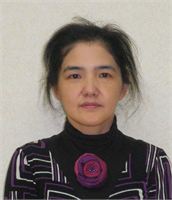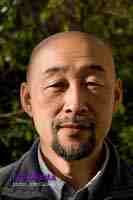Butoh Performance presentation For ECArTE 2013 in Paris
Primordial butoh dance elicits another sphere of bodymind reflection
Mika Takeuchi (Chiaki Mima) and Itto Morita (Toshiharu Kasai)
Before reflections become the target of the conscious thinking process, we need to be overwhelmed by inexplicable bodymind experiences, and the reflections should be deep or worthy enough to be contemplated.
Performance is usually thought to be conceptually organized on a given theme or topic. But butoh dance still preserves its original amorphous and primordial nature by refusing verbal conceptualization because of its chaotic movements. When people encounter a primordial butoh dance performance, their bodymind would be threatened or shocked by unspeakable impacts. It is mainly because such butoh performance is not composed of well articulated body movements, and the performer her/himself allows her/himself to be attacked or infiltrated by feelings or emotions such as uneasiness, fear, sorrow, desperation, happiness, devastation and serenity coming from within her/his bodymind and also from the environments including sounds, lights, smells, winds, temperature, humidity, the weight of the body, textures of the floor, the scenery, a flying bird, etc. There are a couple of key points to make a butoh performance primordial or inexplicable. Firstly, the butoh dancer should allow anything to come or occur in her or his bodymind by opening up, even if it is felt dangerous. Secondly, in order to actualize this first point, it is necessary to train physically and mentally to accept those invasive and self-annihilative factors that are often seen in schizophrenic patients.
Tatsumi Hijikata, the originator of butoh, once wrote that “…butoh is a corpse standing straight up in a desperate bid for life”. The normal mode of reflection would be confused by those chaotic and non-dualistic factors in butoh, which creates an opportunity to understand a different dimension of reflection.
Biography

Butoh: Mika Takeuchi (Chiaki Mima) M.A., certified dance therapist of Japan Dance Therapy Association and board member. Mika Takeuchi is her stage name as a butoh dancer. She is a butoh dancer having performance and workshops in more than 30 cities in Japan, U.S, and Europe. Part-time practitioner working for a mental clinic since 1999, with five different programmes a week for patients diagnosed with schizophrenia, depression, dementia and Altzheimers. Temporary lecturer at Sapporo Gakuin University teaching dance therapy since 2007.
Recent publications & conference presentations
Chiaki Mima (2011) Dance movement therapy for re-work programme from depression at a mental clinic. The 20th Annual conference of Japan Dance Therapy Association. 12. Chiaki Mima and Toshiharu Kasai (2012) The Structure of the Body-Mind Experiences in Arm-Standing Lesson - A Study by Relatedness Evaluation Qualitative Analysis. Japanese Journal of Dance Therapy (in press)
Butoh: Itto Morita (Toshiharu Kasai)

Professor of Department of Clinical Psychology, Faculty of Humanities, Sapporo Gakuin University, Japan, teaching body psychotherapy, group approach, and dance therapy for undergraduates and master course students. Certified dance therapist of Japan Dance Therapy Association, also its board member
Recent publications & conference presentations
Toshiharu Kasai (2009). New understandings of Butoh Creation and Creative Autopoietic Butoh - From Subconscious Hidden Observer to Perturbation of Body-Mind System. Bulletin of Faculty of Humanities, Sapporo Gakuin University, No.86, 21-36. Toshiharu Kasai (2011). A body psychotherapy employing delicate movements and peaceful voices. The 20th Annual Conference of Japan Dance Therapy Association, 12. (Japanese)
